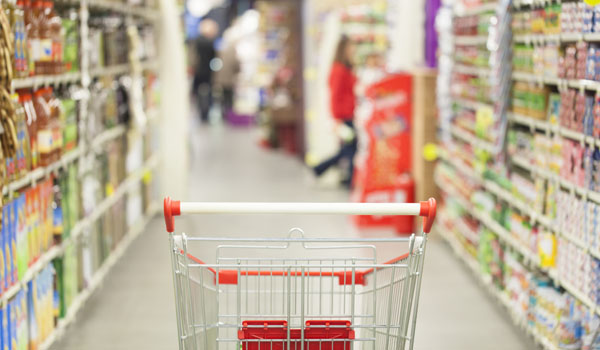By Ruth Vadillo
Shopping for groceries may be a little different this year, with digital technologies and enhanced instore experiences predicted to be the supermarket trends of 2016.
John Karolefski, veteran supermarket analyst and editor of GroceryStories.com, has provided five trends in grocery shopping for 2016. Although these are based on US research we see many of these trends resonating with the Australian market.
1. Shopping online – Not a new concept by any means but nevertheless a trend that will continue to grow throughout 2016. With most key players already offering online ordering, the focus will be on how supermarkets can expand their online services, with more options for product selection, streamlining the ordering process, and creating greater efficiency in delivery and pick up services.
Independents yet to enter into the online space will also be developing their capabilities. As will complimentary service providers, such as companies like ShopWings who allow customers to shop for their favourite products from Coles, Aldi and Harris Farm through a single online destination.
2. The digital store – Karolefski predicts the main trends in this space being, wider adoption of beacons and electronic shelf labels. In 2015 many of Australia’s largest retailer’s trialed beacon technology in store. Most used the technology to trigger communications to customers, but others such as Big W, used the technology to enable games in store, driving customer engagement.
Electronic shelf labels have been widely adopted in Europe, with ESLs almost becoming the most common in store pricing method in some countries, such as France. Analysts are predicting significant growth globally over the next 10 years, as retailers become more comfortable with these technologies internationally.
Similarly to the US electronic shelf labels are yet to become common place in Australia, all eyes are on the few retailers that are testing and rolling out the technology, such as Kroger (US), Telstra and Woolworths (Australia).
“For the last few years Australia has been in the awareness and research stage of the buying cycle with this technology, but in the second half of 2015 we saw a lot of retailers moving into the evaluation stage.
“They’re now looking to understand the technology in more detail, assessing the effect it would have on their overall business, through added value features, such as, streamlining operational tasks like restocking, NFC marketing opportunities, compliance, data collection and automated checkouts.
“We’re working with retailers to help them calculate their ROI for an electronic shelf label solution, which ultimately determines the success of the business case for implementation. In 2016 we expect to see more retailers evaluating the technology, as well as pilots and full roll-outs,” Neville Sundel CEO of esLabels (Australian electronic shelf label solutions).
We’ll also likely see growth in a range of other digital technologies within supermarkets, due to the operational efficiencies they create, such as, digital signage, automated check outs, and temperature and stock sensors.
3. Shrinking the supermarket – Karolefski hypothesis’s that there’s a trend moving towards picking up fresh produce, dairy, baked goods and prepared food on a frequent basis, whilst shopping for packaged food and ingredients on a less frequent basis in store or online. This is leading to smaller format supermarkets, especially in urbans areas.
This behavioural trend is likely true of Australia as well, with more shopping options available in convenient areas, buying fresh food more frequently is not only an easier solution but a logical one as well.
Probably more relevant to Australia is a new trend that’s emerging, of customers shopping with a variety of specialist food retailers, seeking higher quality produce that’s organic, grass fed etc. And in stark comparison the rise of the discount supermarket, such as Aldi and the potential launch of Lidl in Australia.
4. Entertaining in stores – “While online grocery ordering and smaller stores are trending, more operators of traditionally large supermarkets will take advantage of their space to lure customers with special events,” Karolefski states. Think more product sampling, cooking demos and nutritional tours.
5. Dining in stores – As per the previous trend, this is a reaction to the continued surge of online shopping, as retailers look to find new ways to bring customers in store by enhancing their shopping experience. Providing food and beverages on site with cafés and restaurants is one way of doing this; and it has the added benefit of extending the overall time customers spend in store. This has been a strong trend in the UK for a while now, and is a growing trend in Australia, with retailers such as Harris Farm providing on site coffee shops at some of its stores.
This article was written by Ruth Vadillo marketing manager at esLabels. For more information contact Ruth at ruth.vadillo@eslabels.com.au.

